Optimization Design of Underground Space Overburden Thickness in a Residential Area Concerning Outdoor Thermal Environment Evaluation
Abstract
:1. Introduction
2. Methodology
2.1. Influence Mechanism of the OTUS on Outdoor Thermal Environment
2.2. Optimization Design Framework
3. Case Study
3.1. Optimization Design Object
3.2. Case Setup
3.3. Evaluation Index
4. Results and Discussion
4.1. Airflow Field
4.2. Air Temperature
4.3. Relative Humidity
4.4. Outdoor Thermal Comfort
5. Conclusions
Author Contributions
Funding
Conflicts of Interest
References
- Yang, F.; Lau, S.S.Y.; Qian, F. Thermal comfort effects of urban design strategies in high-rise urban environments in a sub-tropical climate. Archit. Sci. Rev. 2011, 54, 285–304. [Google Scholar] [CrossRef]
- Hong, B.; Lin, B.R. Numerical studies of the outdoor wind environment and thermal comfort at pedestrian level in housing blocks with different building layout patterns and trees arrangement. Renew. Energy 2015, 73, 18–27. [Google Scholar] [CrossRef]
- Hong, B.; Lin, B.R.; Wang, B.; Li, S.H. Optimal design of vegetation in residential district with numerical simulation and field experiment. J. Cent. South Univ. Technol. 2012, 19, 688–695. [Google Scholar] [CrossRef]
- Lin, T.P.; Matzarakis, A.; Hwang, R.L. Shading effect on long-term outdoor thermal comfort. Build. Environ. 2010, 45, 213–221. [Google Scholar] [CrossRef]
- Lai, D.Y.; Guo, D.H.; Hou, Y.F.; Lin, C.Y.; Chen, Q.Y. Studies of outdoor thermal comfort in northern china. Build. Environ. 2014, 77, 110–118. [Google Scholar] [CrossRef]
- Wong, K.V.; Paddon, A.; Jimenez, A. Review of world urban heat islands: Many linked to increased mortality. J. Energy Resour. Technol.-Trans. ASME 2013, 135, 11. [Google Scholar] [CrossRef]
- Robine, J.M.; Cheung, S.L.K.; Le Roy, S.; Van Oyen, H.; Griffiths, C.; Michel, J.P.; Herrmann, F.R. Death toll exceeded 70,000 in europe during the summer of 2003. C. R. Biol. 2008, 331, 171–178. [Google Scholar] [CrossRef] [PubMed]
- Conti, S.; Meli, P.; Minelli, G.; Solimini, R.; Toccaceli, V.; Vichi, M.; Beltrano, C.; Perini, L. Epidemiologic study of mortality during the summer 2003 heat wave in Italy. Environ. Res. 2005, 98, 390–399. [Google Scholar] [CrossRef] [PubMed]
- Vandentorren, S.; Suzan, F.; Medina, S.; Pascal, M.; Maulpoix, A.; Cohen, J.C.; Ledrans, M. Mortality in 13 French Cities During the August 2003 Heat Wave. Am. J. Public Health 2004, 94, 1518. [Google Scholar] [CrossRef] [PubMed]
- Kovats, S.; Wolf, T.; Menne, B. Heatwave of August 2003 in Europe: Provisional Estimates of the Impact on Mortality. Available online: https://www.eurosurveillance.org/content/10.2807/esw.08.11.02409-en (accessed on 23 August 2018).
- Hong, B.; Lin, B.R.; Hu, L.H.; Li, S.H. Optimal tree design for sunshine and ventilation in residential district using geometrical models and numerical simulation. Build. Simul. 2011, 4, 351–363. [Google Scholar] [CrossRef]
- Ooka, R.; Chen, H.; Kato, S. Study on optimum arrangement of trees for design of pleasant outdoor environment using multi-objective genetic algorithm and coupled simulation of convection, radiation and conduction. J. Wind Eng. Ind. Aerodyn. 2008, 96, 1733–1748. [Google Scholar] [CrossRef]
- Zhang, L.; Zhan, Q.; Lan, Y. Effects of the tree distribution and species on outdoor environment conditions in a hot summer and cold winter zone: A case study in Wuhan residential quarters. Build. Environ. 2018, 130, 27–39. [Google Scholar] [CrossRef]
- Su, X.; Cai, H.; Chen, Z.; Feng, Q.; Su, X.; Cai, H.; Chen, Z.; Feng, Q. Influence of the Ground Greening Configuration on the Outdoor Thermal Environment in Residential Areas under Different Underground Space Overburden Thicknesses. Sustainability 2017, 9, 1656. [Google Scholar] [CrossRef]
- Yang, X.B.; Chen, Z.L.; Cai, H.; Ma, L.J. A framework for assessment of the influence of china’s urban underground space developments on the urban microclimate. Sustainability 2014, 6, 8536–8566. [Google Scholar] [CrossRef]
- Wu, F.; Li, S.; Zhang, L.; Liu, J. Study on the Difference of Eco-efficiency of Different Ratios of Tree and Shrub-grassed Greenland. In Seizing the Opportunities for the 2008 Olympic Games to Further Promote the Urban Greening Level in Beijing; Beijing Institute of Landscape Architecture: Beijing, China, 2005; Available online: http://cpfd.cnki.com.cn/Article/CPFDTOTAL-YLXH200510001070.htm (accessed on 23 August 2018). (In Chinese)
- Zhang, X.; Li, Z.; Wang, J.; Zhao, C.; Liu, T. Analysis of the ratio of arbor to shrub of several types of green space in Beijing. J. Beijing For. Univ. 2010, S1, 183–188. (In Chinese) [Google Scholar]
- Dimoudi, A.; Nikolopoulou, M. Vegetation in the urban environment: Microclimatic analysis and benefits. Energy Build. 2003, 35, 69–76. [Google Scholar] [CrossRef]
- Lin, B.R.; Li, X.F.; Zhu, Y.X.; Qin, Y.G. Numerical simulation studies of the different vegetation patterns’ effects on outdoor pedestrian thermal comfort. J. Wind Eng. Ind. Aerodyn. 2008, 96, 1707–1718. [Google Scholar] [CrossRef]
- Wong, N.H.; Jusuf, S.K.; La Win, A.A.; Thu, H.K.; Negara, T.S.; Wu, X.C. Environmental study of the impact of greenery in an institutional campus in the tropics. Build. Environ. 2007, 42, 2949–2970. [Google Scholar] [CrossRef]
- Yang, X.S.; Zhao, L.H.; Bruse, M.; Meng, Q.L. Evaluation of a microclimate model for predicting the thermal behavior of different ground surfaces. Build. Environ. 2013, 60, 93–104. [Google Scholar] [CrossRef]
- Huang, L.M.; Li, H.T.; Zha, D.H.; Zhu, J.Y. A fieldwork study on the diurnal changes of urban microclimate in four types of ground cover and urban heat island of nanjing, china. Build. Environ. 2008, 43, 7–17. [Google Scholar] [CrossRef]
- Robitu, M.; Musy, M.; Inard, C.; Groleau, D. Modeling the influence of vegetation and water pond on urban microclimate. Sol. Energy 2006, 80, 435–447. [Google Scholar] [CrossRef]
- Bruse, M.; Fleer, H. Simulating surface-plant-air interactions inside urban environments with a three dimensional numerical model. Environ. Model. Softw. 1998, 13, 373–384. [Google Scholar] [CrossRef]
- Ge, Y. Analysis of Several Factors of the Multi-Storey Underground Garage’s Structure Cost Optimization. Master’s Thesis, Anhui Jianzhu University, Hefei, China, 2014. (In Chinese). [Google Scholar]
- ISO 7726. In Ergonomics of the Thermal Environment—Instrument for Measuring Physical Quantities; International Organization for Standardization: Geneva, Switzerland, 1998.
- Ali-Toudert, F.; Mayer, H. Numerical study on the effects of aspect ratio and orientation of an urban street canyon on outdoor thermal comfort in hot and dry climate. Build. Environ. 2006, 41, 94–108. [Google Scholar] [CrossRef]
- Swaid, H.; Bar-El, M.; Hoffman, M.E. A bioclimatic design methodology for urban outdoor spaces. Theor. Appl. Climatol. 1993, 48, 49–61. [Google Scholar] [CrossRef]
- Nunez, M.; Oke, T.R. The energy balance of an urban canyon. Appl. Meteorol. 1977, 16, 11–19. [Google Scholar] [CrossRef]
- Fanger, P.O. Thermal Comfort: Analysis and Applications in Environmental Engineering; Danish Technical Press: Copenhagen, Denmark, 1970. [Google Scholar]
- Bruse, M. The Influences of Local Environmental Design on Microclimate-Development of a Prognostic Numerical Model Envi-Met for the Simulation of Wind, Temperature and Humidity Distribution in Urban Structures; Temperature and Humidity Distribution in Urban Structures; Institute of Geography, University of Bochum: Bochum, Germany, 1999. (In German) [Google Scholar]
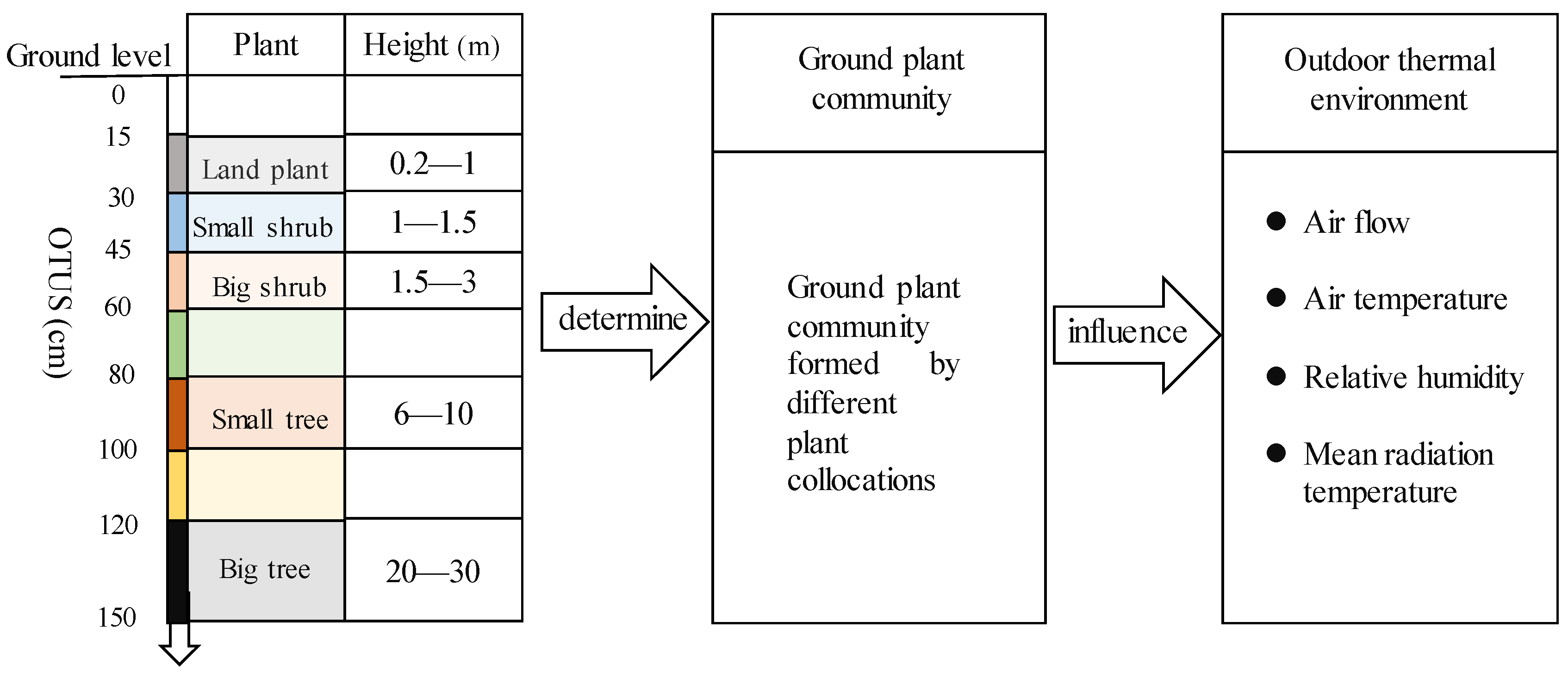

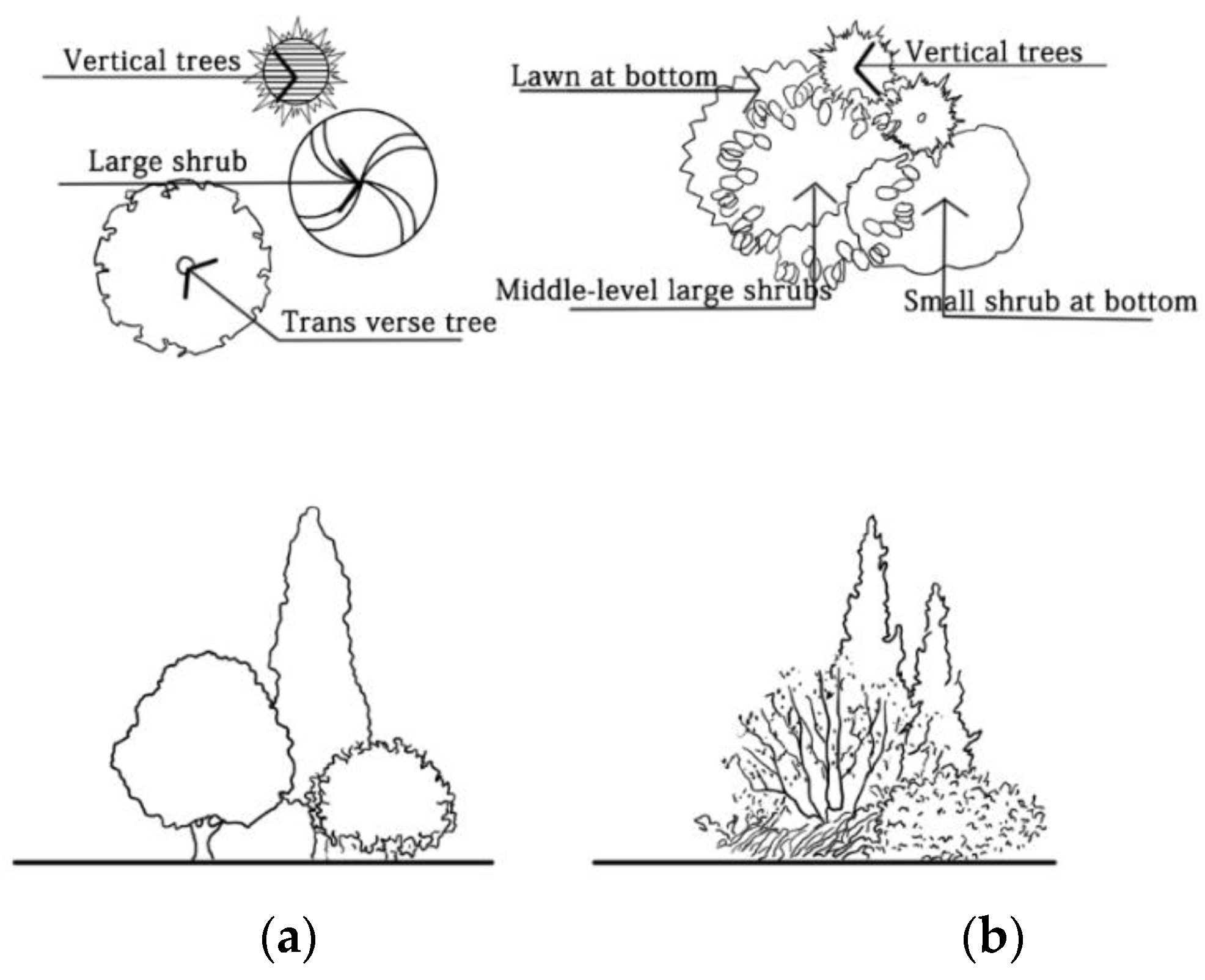
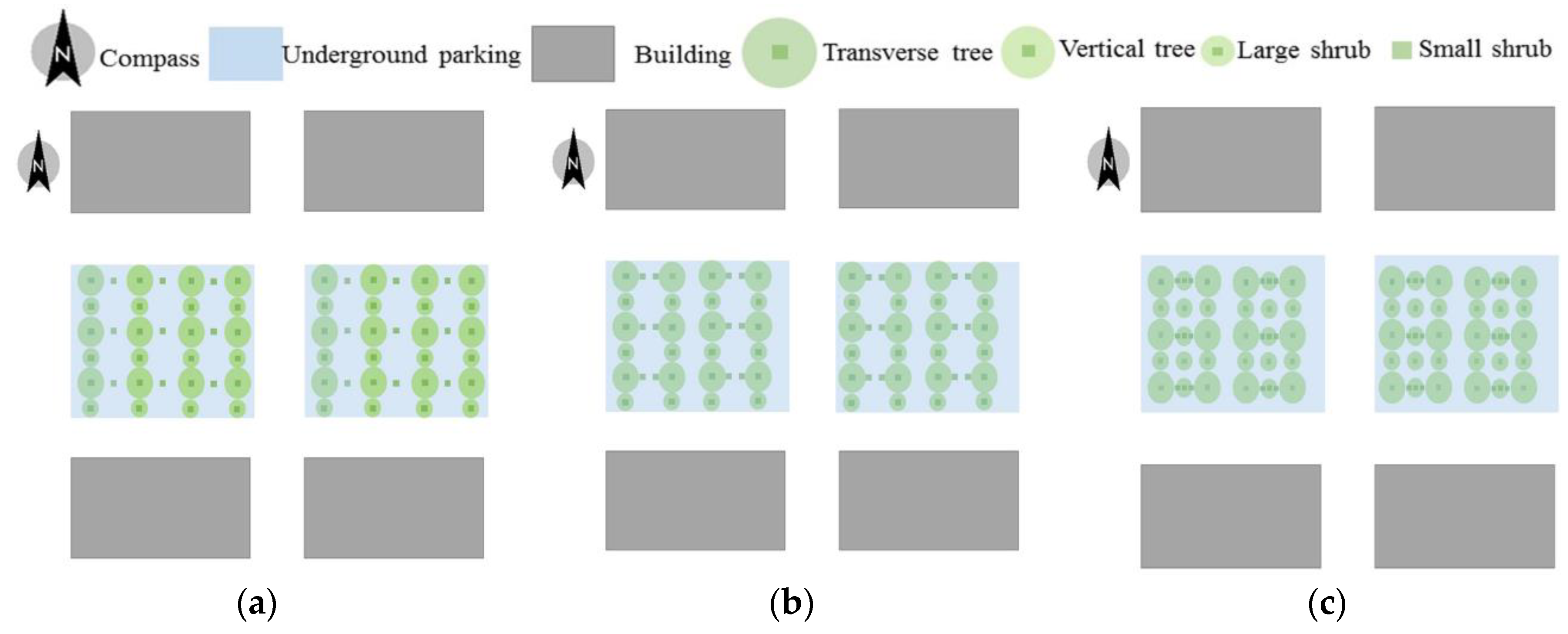
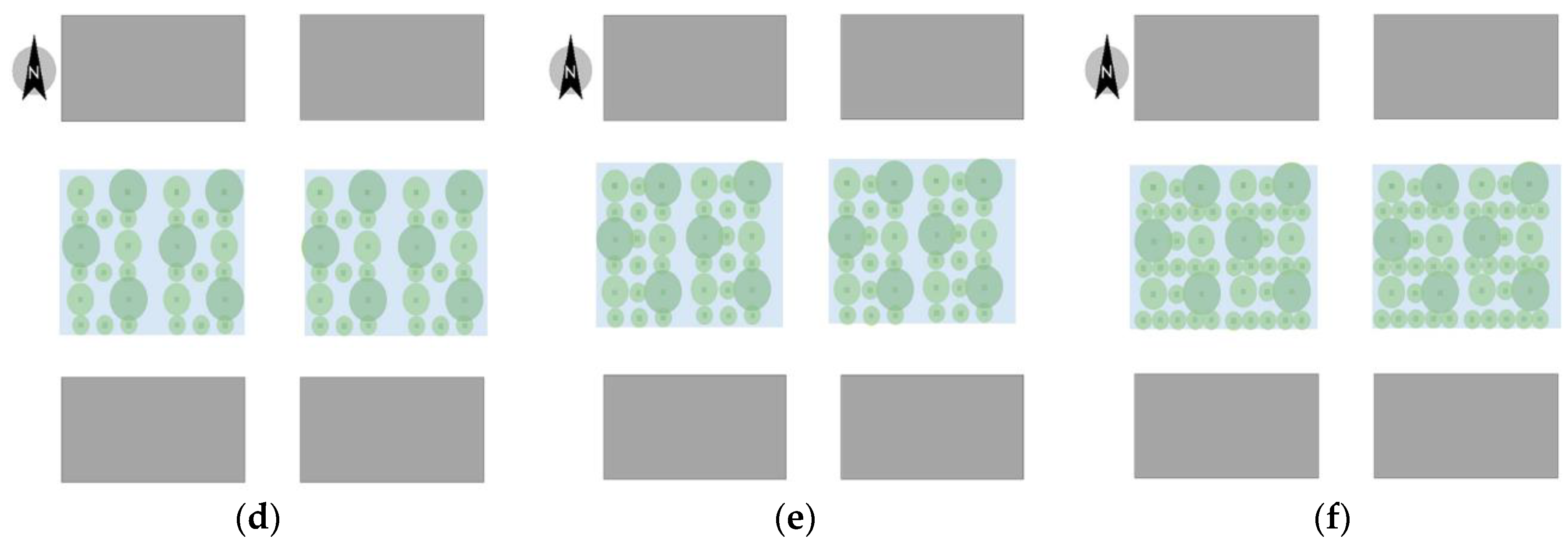

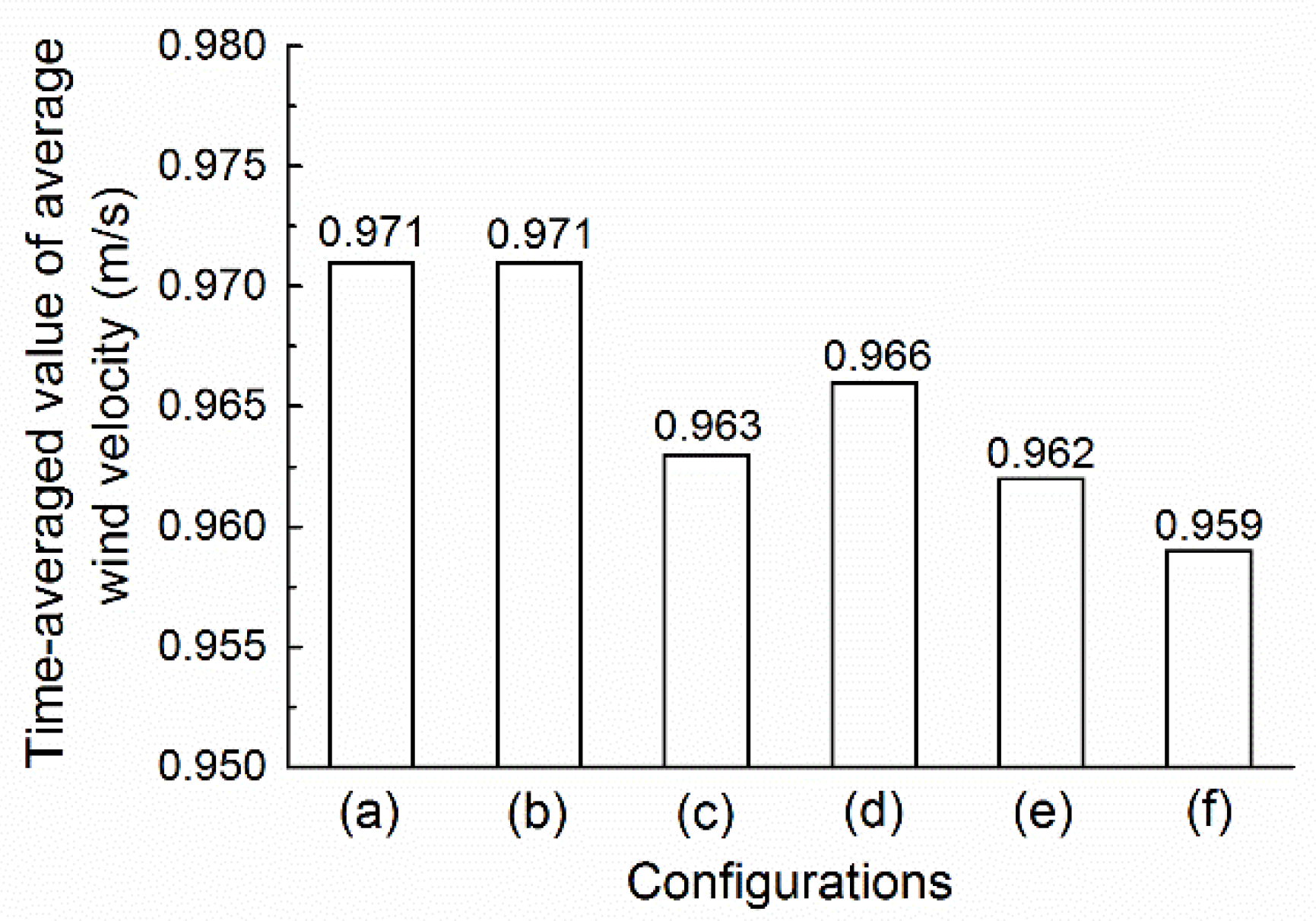

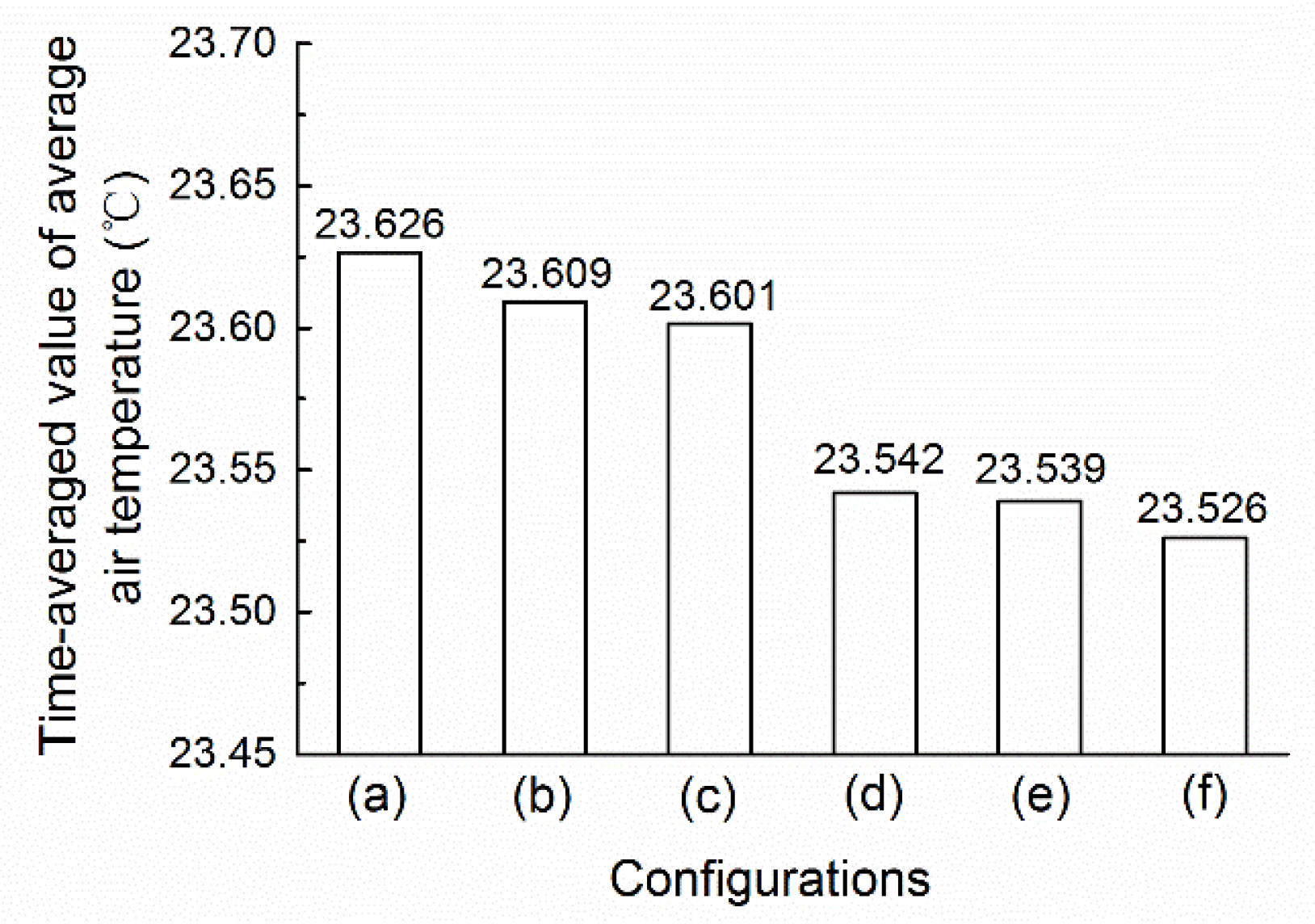
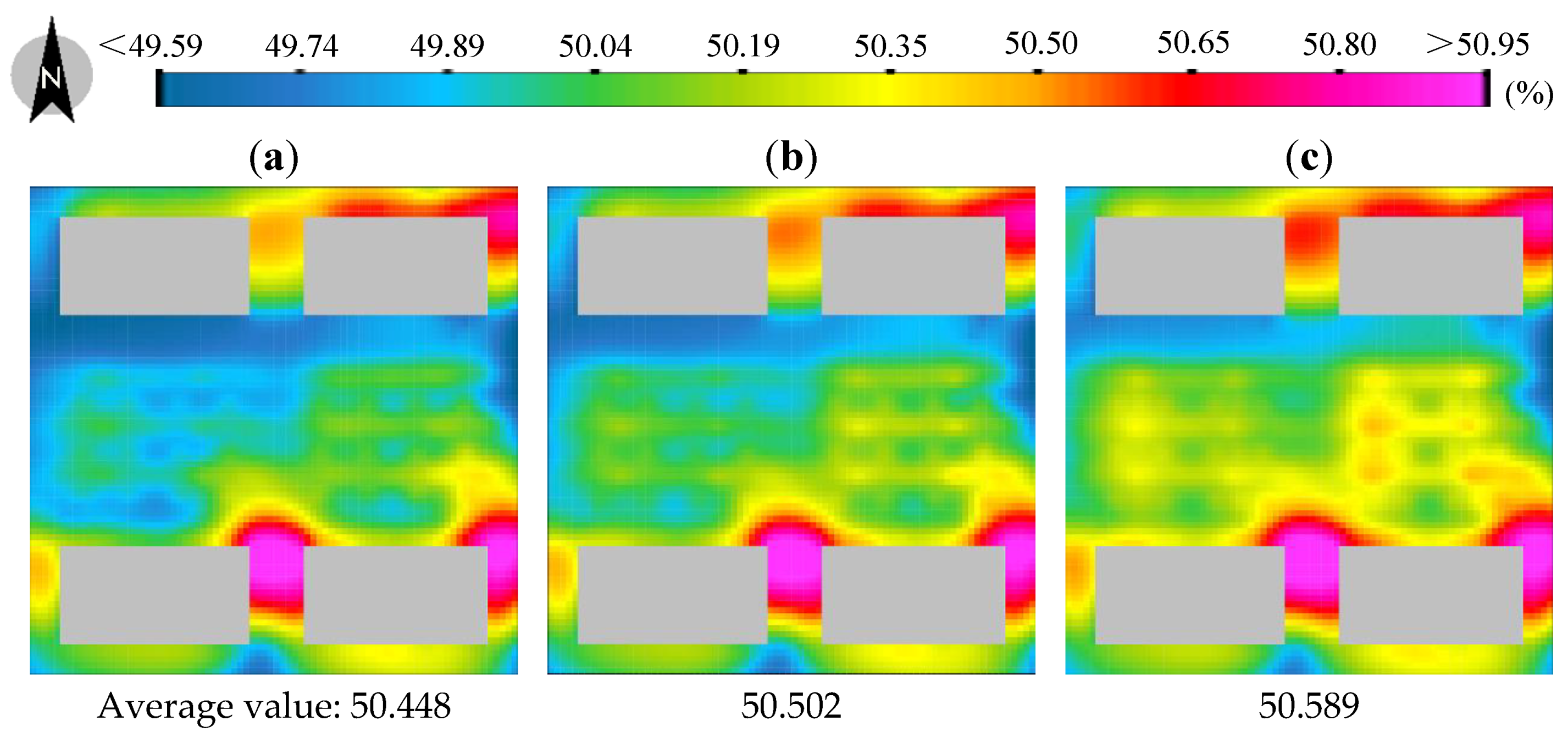
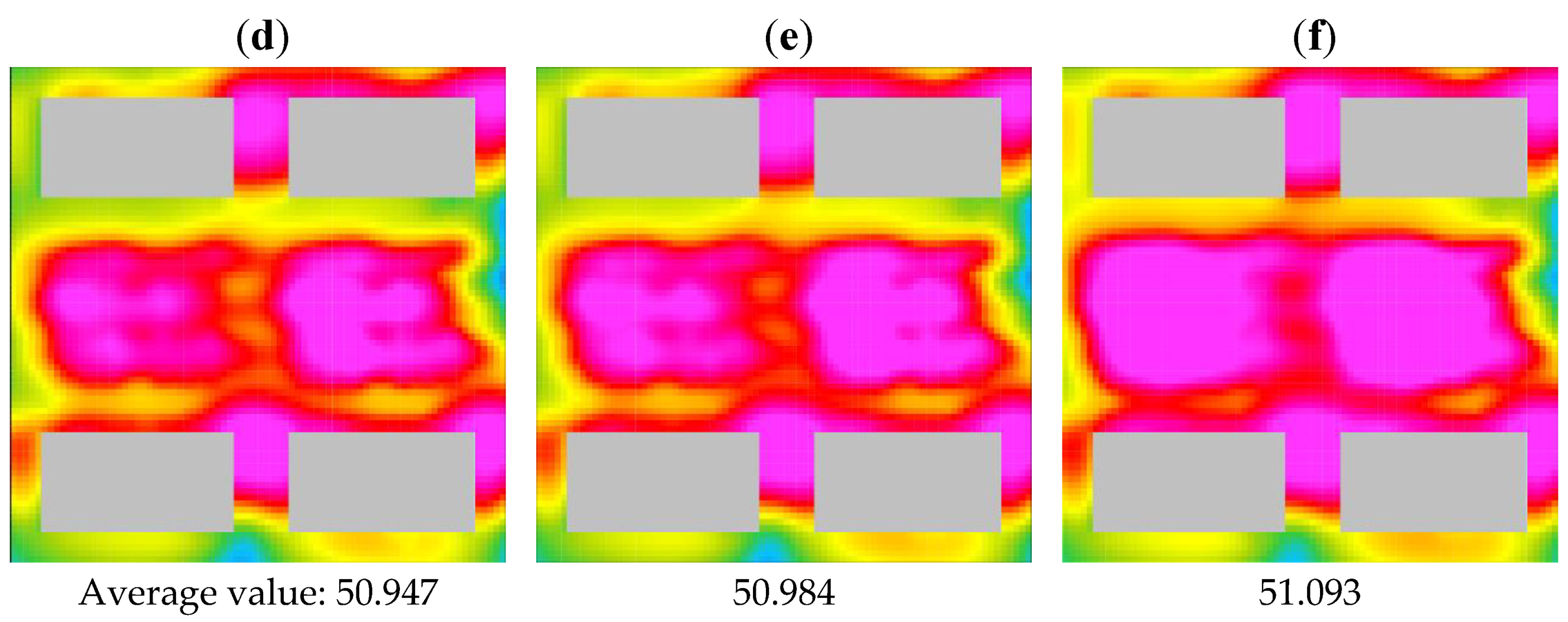
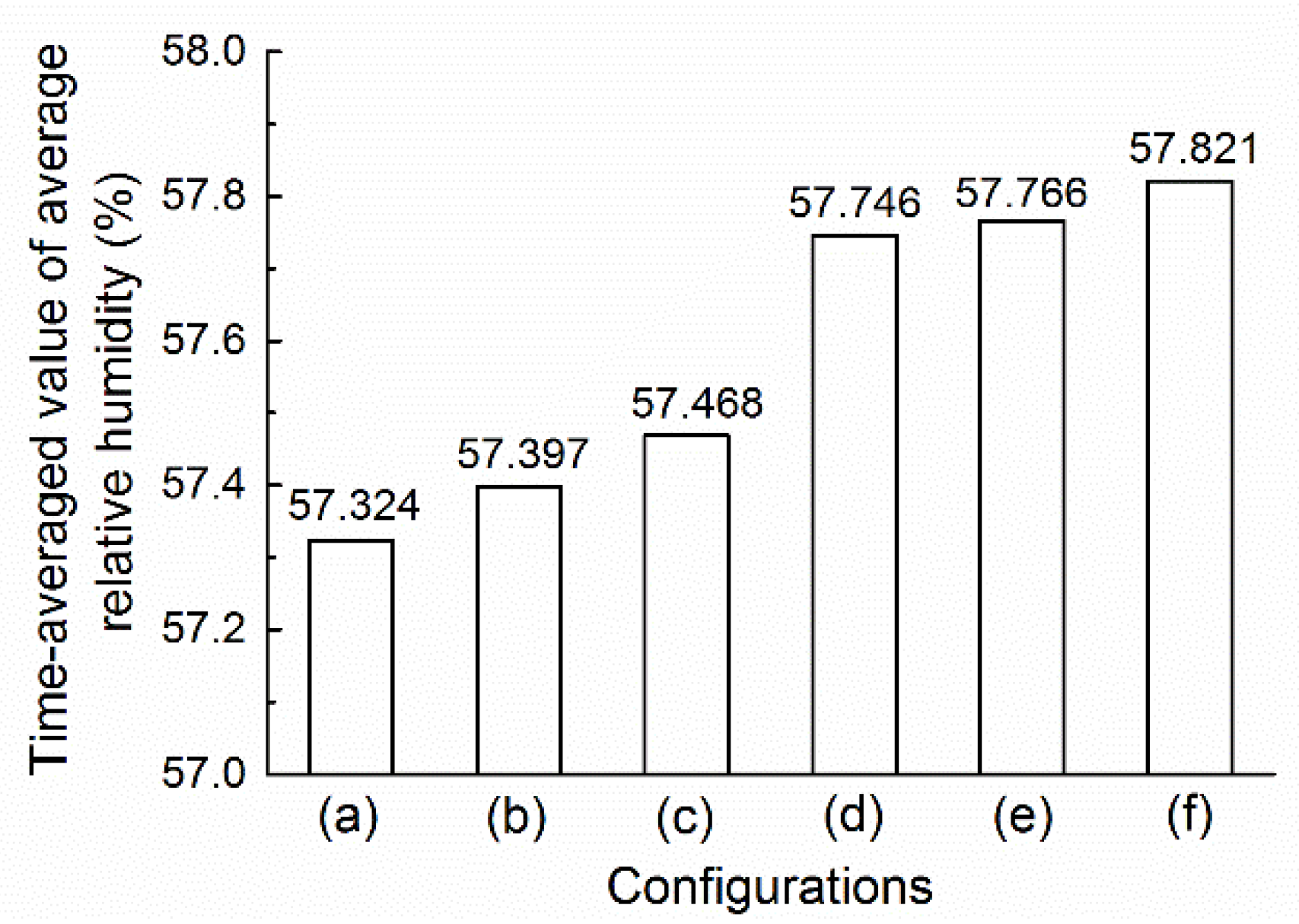
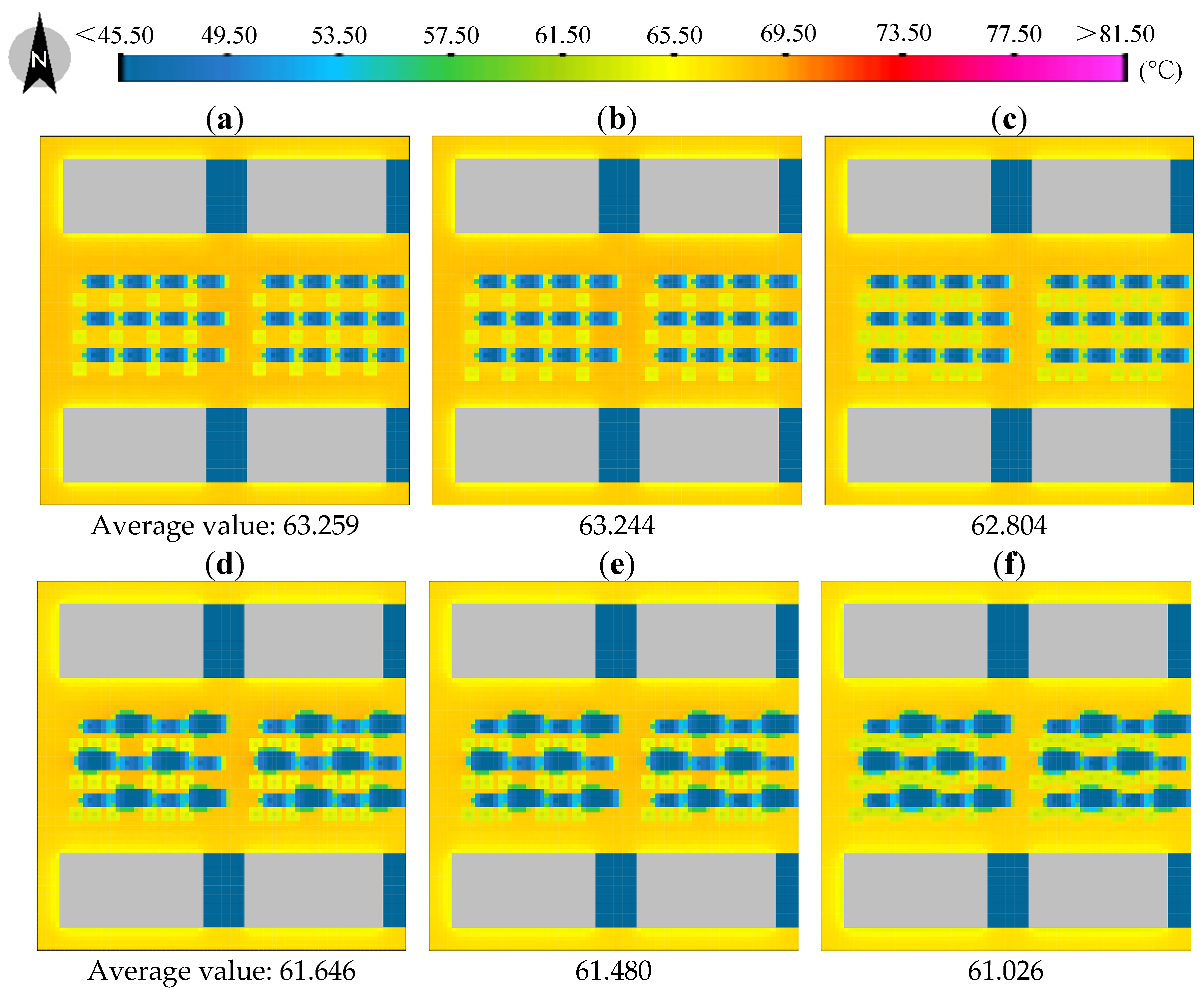
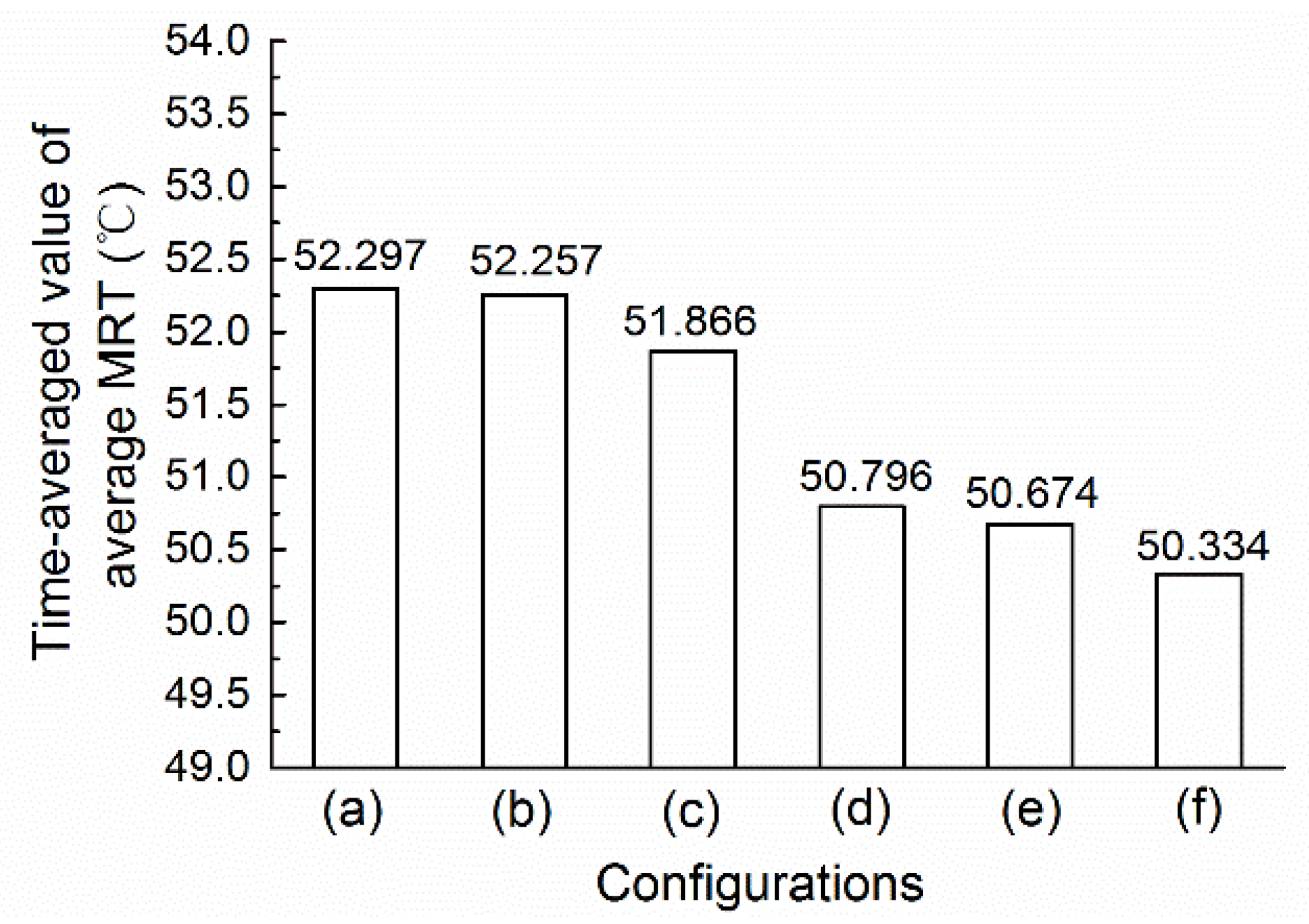
| Parameter | Definition | Values |
|---|---|---|
| Vegetation parameters | Vertical trees | 5 m × 5 m × 10 m (L × W × H) |
| Transverse trees | 7 m × 7 m × 6 m (L × W × H) | |
| Large shrubs | 3 m × 3 m × 2 m (L × W × H) | |
| Small shrubs | 1 m ×1 m × 1 m (L × W × H) | |
| Lawn | 0.2 m (H) | |
| Building model | Building dimensions | 30 m × 15 m × 18 m (L × W × H) |
| Building material | Concrete | |
| Building color | Gray | |
| Initial boundary conditions (typical weather in summer) | Wind velocity (m/s) | 2.4 |
| Wind direction (°) | 157.5 | |
| Initial atmospheric temperature (K) | 294.95 | |
| Outdoor atmospheric pressure (Pa) | 100,250 | |
| Relative humidity (%) | 80 |
© 2018 by the authors. Licensee MDPI, Basel, Switzerland. This article is an open access article distributed under the terms and conditions of the Creative Commons Attribution (CC BY) license (http://creativecommons.org/licenses/by/4.0/).
Share and Cite
Su, X.; Chen, Z.; Zhao, X.; Yang, X.; Feng, Q.; Tang, H. Optimization Design of Underground Space Overburden Thickness in a Residential Area Concerning Outdoor Thermal Environment Evaluation. Sustainability 2018, 10, 3205. https://doi.org/10.3390/su10093205
Su X, Chen Z, Zhao X, Yang X, Feng Q, Tang H. Optimization Design of Underground Space Overburden Thickness in a Residential Area Concerning Outdoor Thermal Environment Evaluation. Sustainability. 2018; 10(9):3205. https://doi.org/10.3390/su10093205
Chicago/Turabian StyleSu, Xiaochao, Zhilong Chen, Xudong Zhao, Xiaobin Yang, Qilin Feng, and Haizhou Tang. 2018. "Optimization Design of Underground Space Overburden Thickness in a Residential Area Concerning Outdoor Thermal Environment Evaluation" Sustainability 10, no. 9: 3205. https://doi.org/10.3390/su10093205
APA StyleSu, X., Chen, Z., Zhao, X., Yang, X., Feng, Q., & Tang, H. (2018). Optimization Design of Underground Space Overburden Thickness in a Residential Area Concerning Outdoor Thermal Environment Evaluation. Sustainability, 10(9), 3205. https://doi.org/10.3390/su10093205





